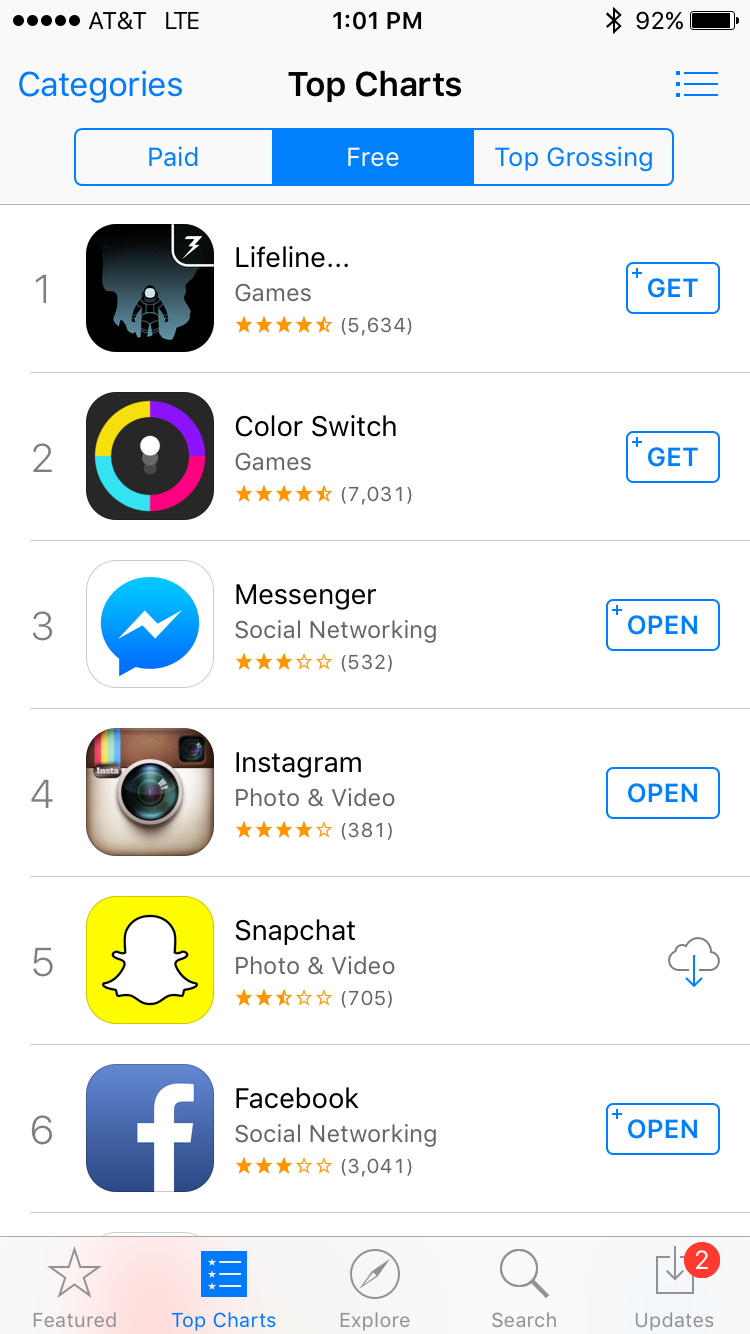It’s hard out there for app developers. Competing with millions of live apps in Google Play and the Apple App Store is difficult enough. User acquisition costs are skyrocketing — up 125% in the last year and hovering near $4 per loyal user. And, to top it off, consumers just don’t seem that interested in using multiple apps.
Why don’t current app marketing strategies work? What can an app developer do to stand out and build a cost-effective app marketing strategy?
Beware the Standard App Marketing Playbook
We’ve written about this before, but the biggest challenge facing developers is getting a user to discover your app. Absent some sort of viral social media-fueled phenomenon, there are two primary methods for app discovery: 1. Paid promotion, 2. App stores via features, lists, and search (not really). Both favor apps that are already successful.
Paid promotion (where installs cost $4 per loyal user) via the generic mobile app install interstitial is both cost-prohibitive and results in a terrible user experience (everyone hates interstitials). As for app stores, you have three options: 1) search (it’s broken), 2) home page feature (reserved for a very select group with good Apple and Google relationships), and 3) making a top ranking list. Top ranking lists are the primary channel for users finding new apps, so making it into the top 10 could be game changing. The problem is that cracking an established list of household brand names and games with well-funded marketing budgets is difficult (nearly impossible or prohibitively expensive).
Start Thinking About App Content Marketing
Apps are amazing sources of unique content — news stories, songs, recipes, photos, and more. So why aren’t developers using this content in their marketing efforts like they’ve been used on the web for years?
Because, until relatively recently, linking to mobile app content has been fundamentally broken. Marketers knew that running content ads or sending emails that linked to generic app load screens and not the promoted content created a terrible user experience. But innovations in deep linking, (specifically contextual deep linking by companies like Branch), have made for incredible gains in user experiences for mobile content marketing. Deep links now take users directly to the content in an app if it’s installed and will even open the same app content if they have to install the app after clicking on the link.
If properly put to use, app content should sit at the core of an app’s growth strategy.
App Content Reduces Mobile User Acquisition Costs
Branch partner Trusper offers a perfect example of how to use content effectively in mobile marketing. Trusper is a free mobile app and website that allows its users “to quickly share and discover tips of daily life with trusted friends, family, and fans.”
Trusper’s users come to the app because it’s full of rich and relevant content. And its content, rightfully, sits at the core of Trusper’s user acquisition strategy. Rather than generic install ads, Trusper promotes its best performing in-app content to drive app installs. Instead of just promoting the idea of Trusper, it can focus on that key recipe or time-saving tip that stands out as the most engaging for new users.
This has been incredibly effective in early tests for Trusper, reducing user acquisition costs by 50% when compared to generic app install ads.
How to Start Using Content in Mobile Marketing

This is because traditional mobile analytics tools like Mixpanel and Google Analytics provide event-based data. This is incredibly valuable for optimizing flows and evaluating features. But when planning content marketing activities, you need to know which individual pieces of content contribute to the engagement and virality of the content in your app.
Branch introduced Content Analytics to specifically solve this problem. Because it is built on our deep linking platform, Content Analytics is able to provide valuable data like views, links created, link clicks, installs, and opens, for individual pieces of app content.
This helps app developers and marketers understand how individual pieces perform and measure growth at a channel-level (e.g. comparing the number of installs driven by a piece of content on Twitter versus Facebook). It’s a perfect tool for jumpstarting a mobile marketing strategy based on content.
How to Start Using Content Analytics
If you’re already using Branch to deep link to content, Branch will automatically track and report links created, link clicks, installs, and opens at the content level. This data will be available on the Branch dashboard for partners using some of our most popular features including content sharing, referrals, or smart banners.
In order to see content-level views in Content Analytics, you need to install the new Branch SDK for iOS or Android. From there, incorporate the Branch Universal Object and use it for the functions ‘registerView’. We’ve dedicated a page on our documentation portal to walk you through the migration to Content Analytics.
Like all Branch products, Content Analytics is completely free.



